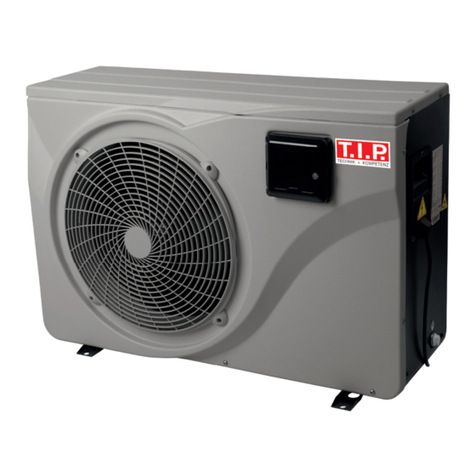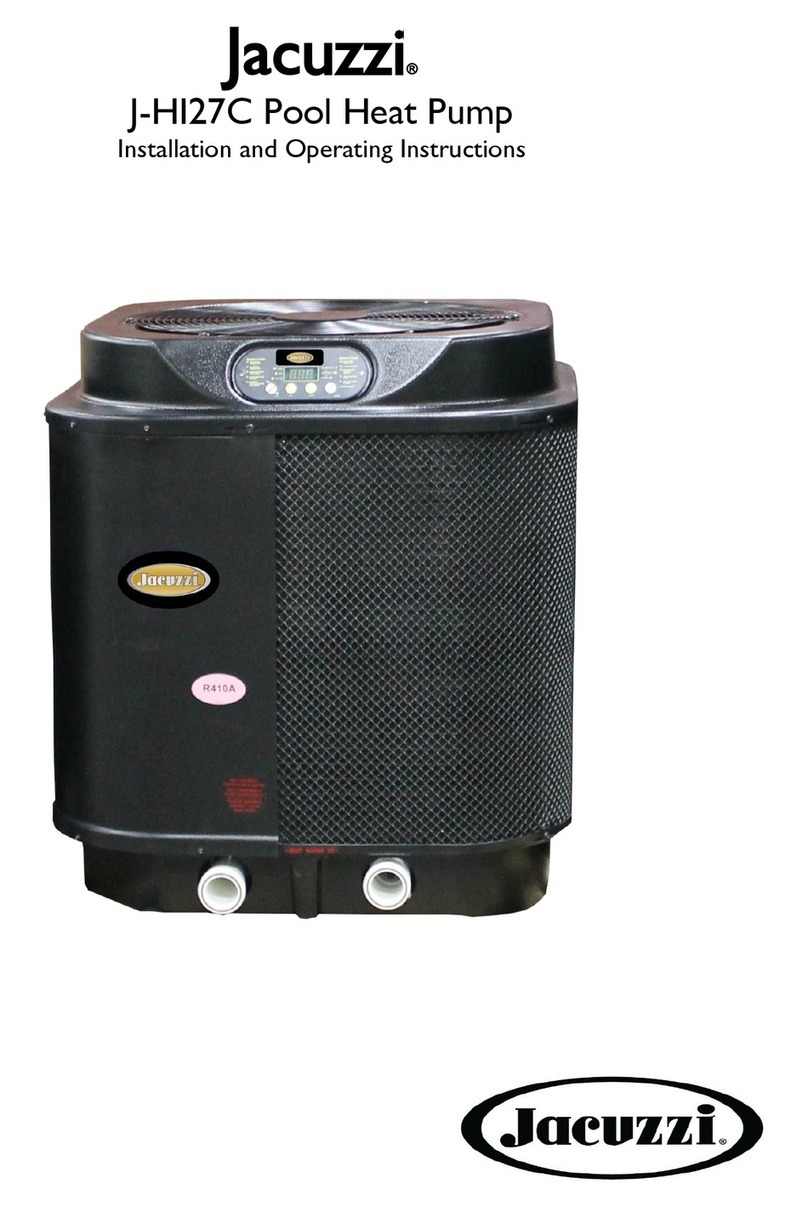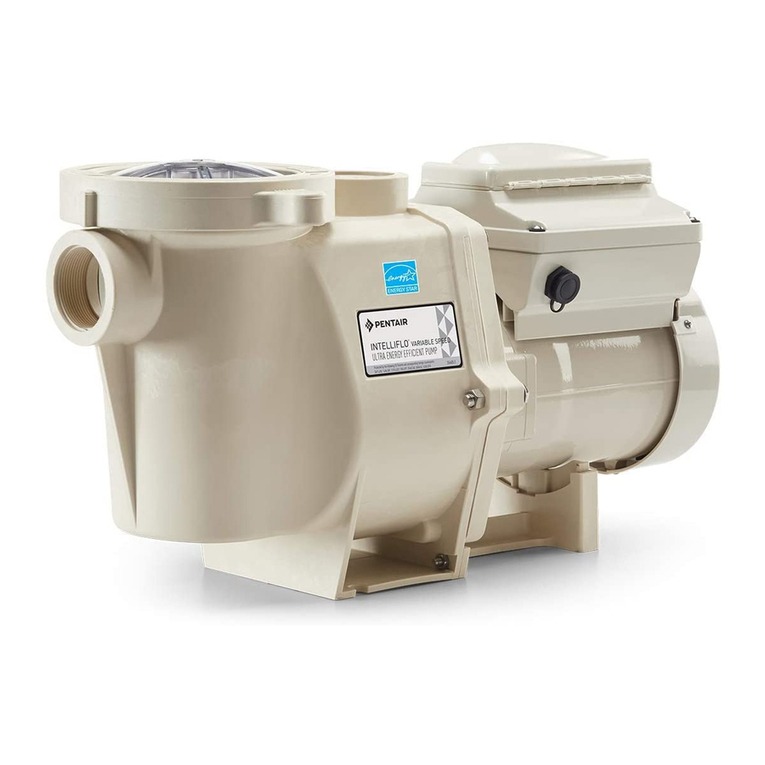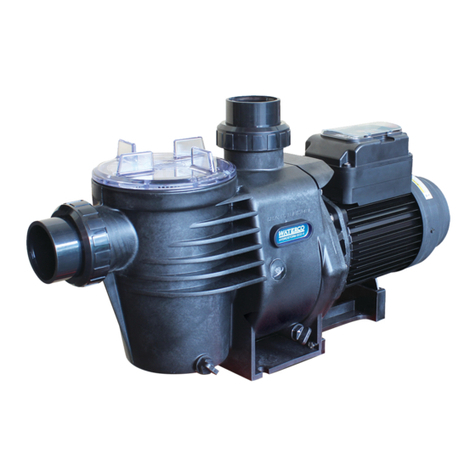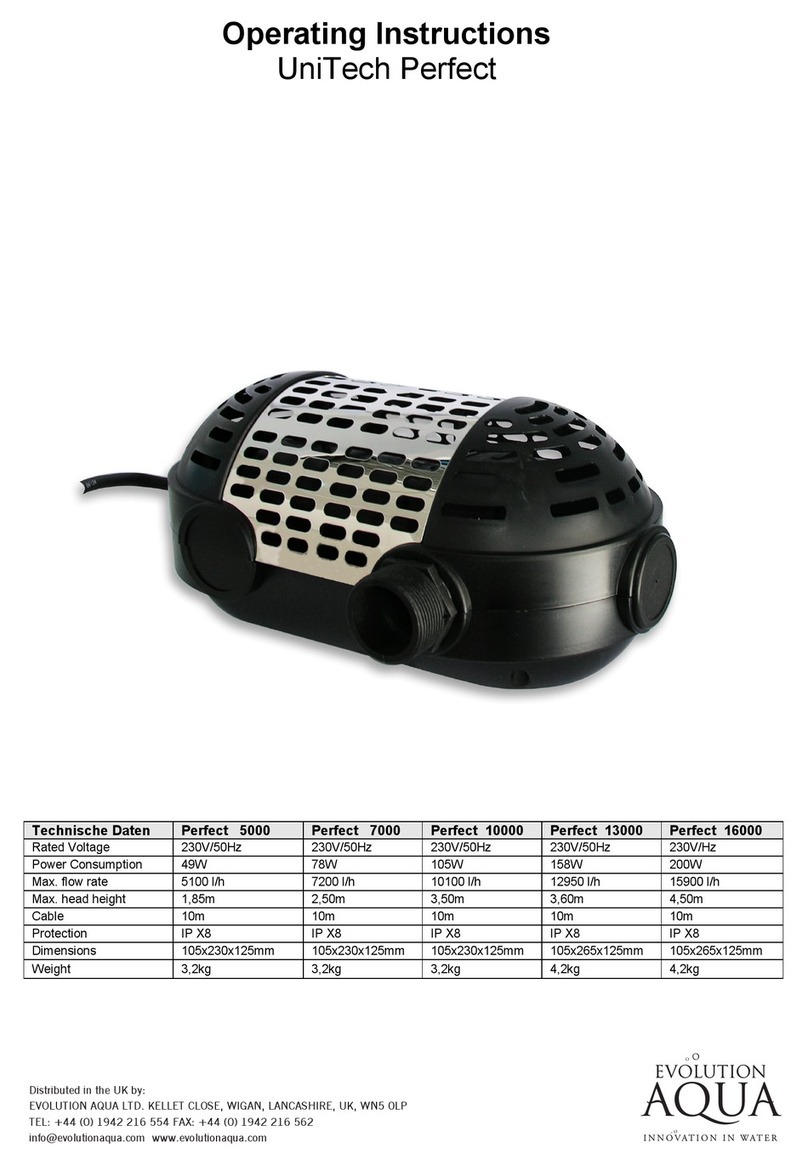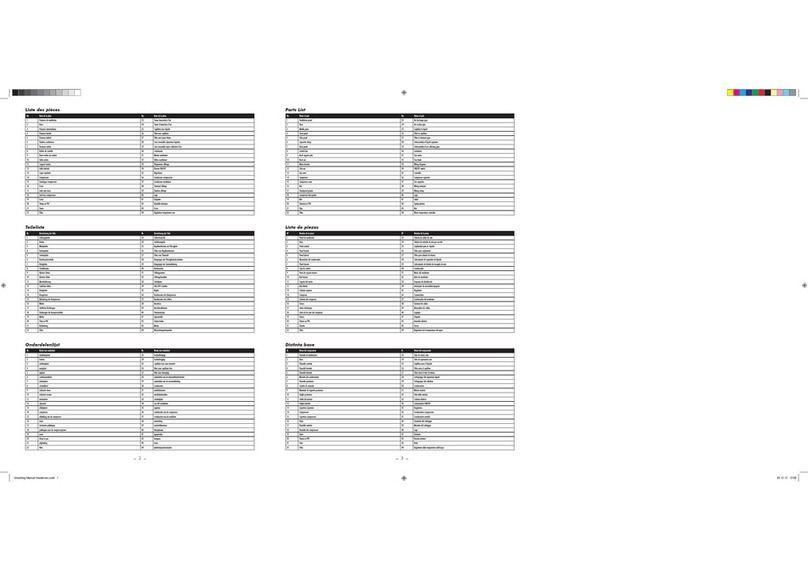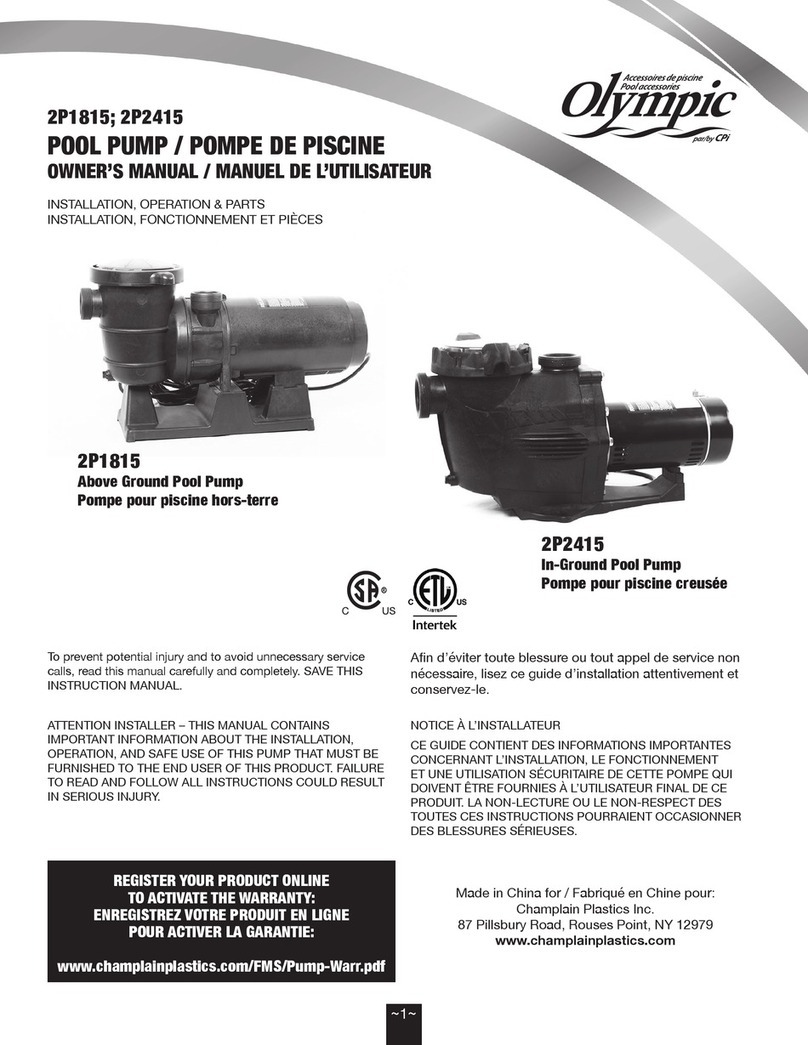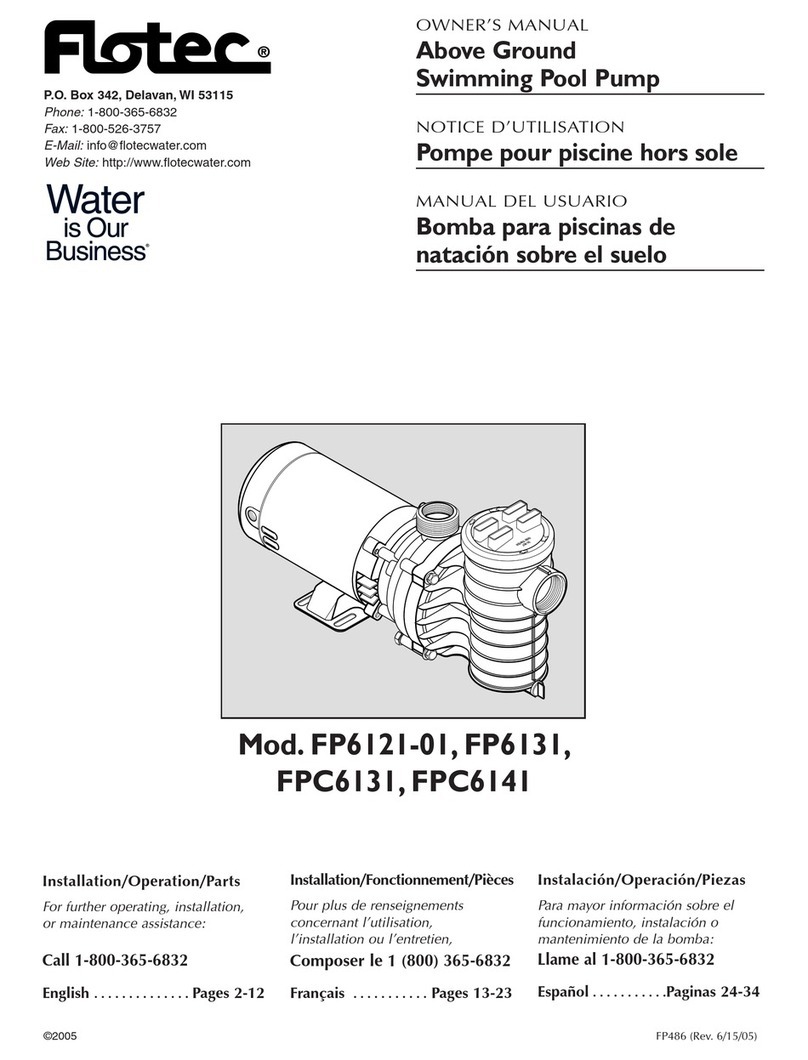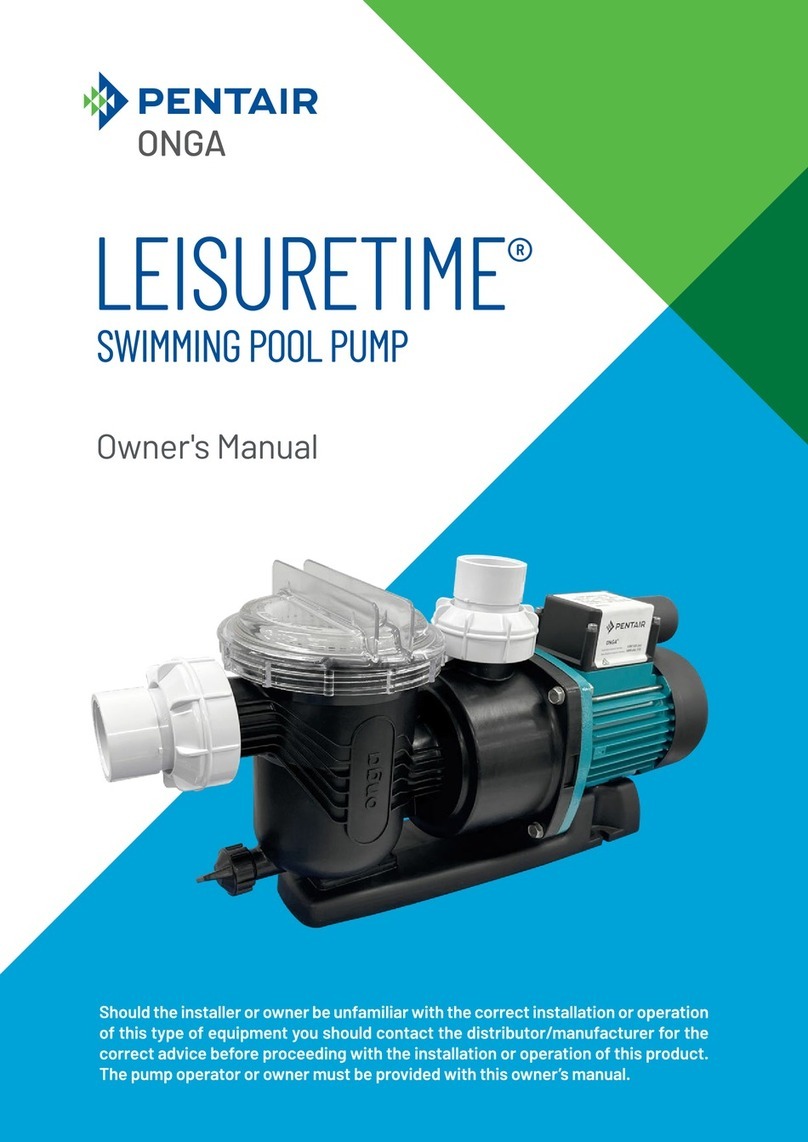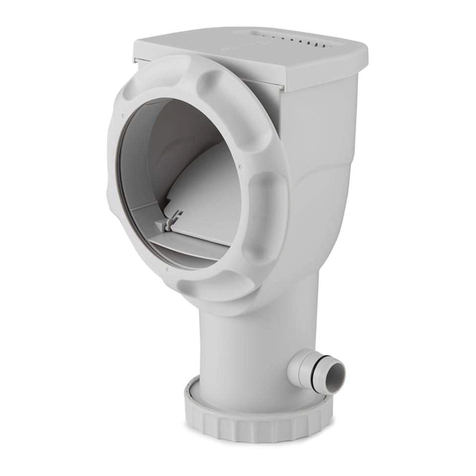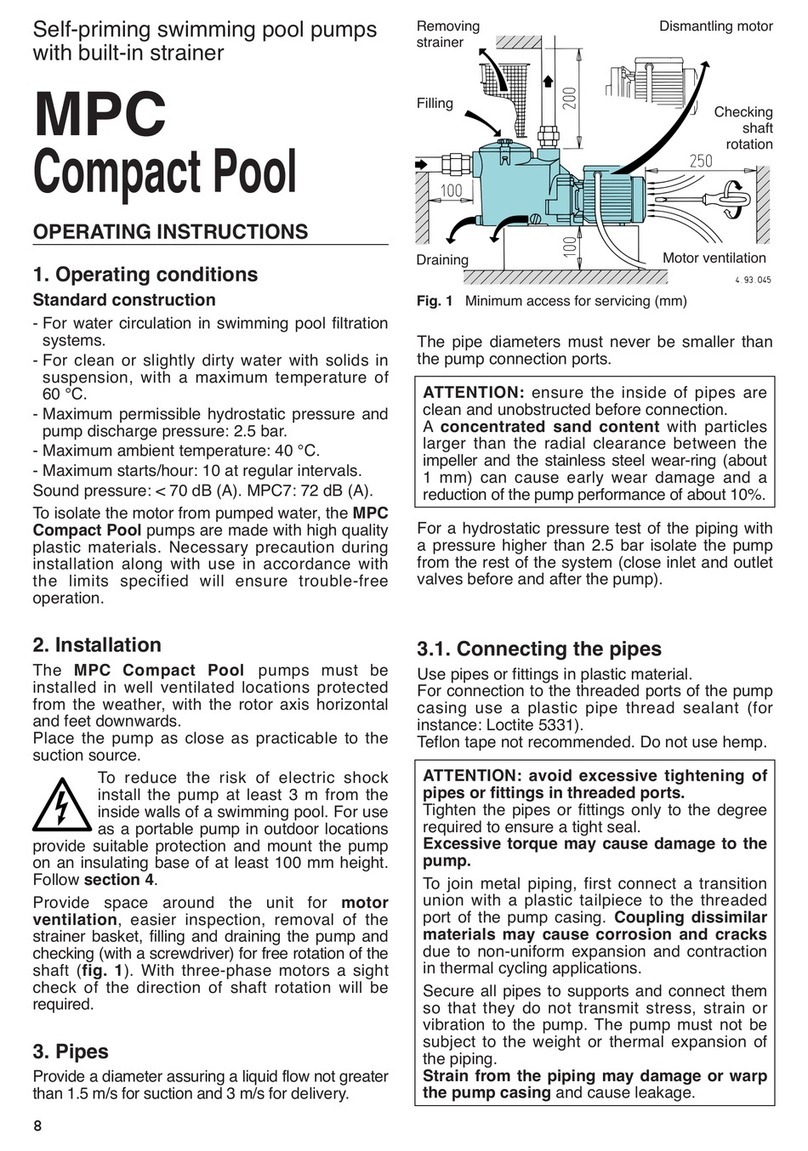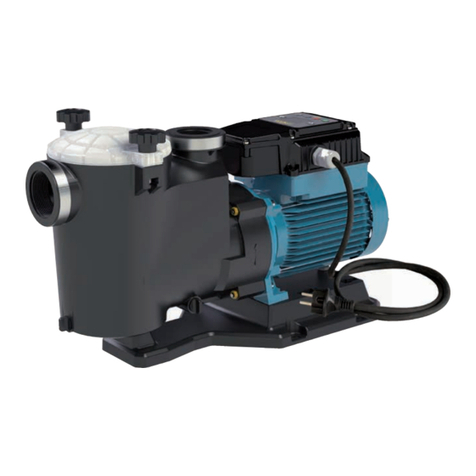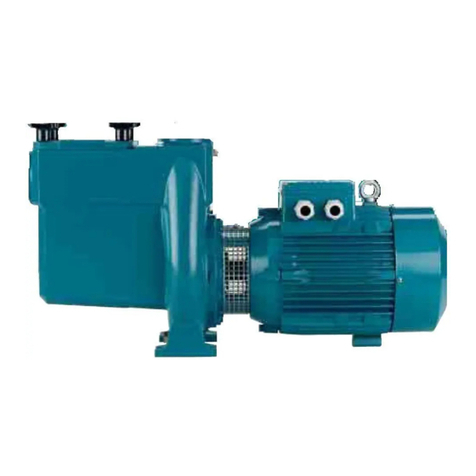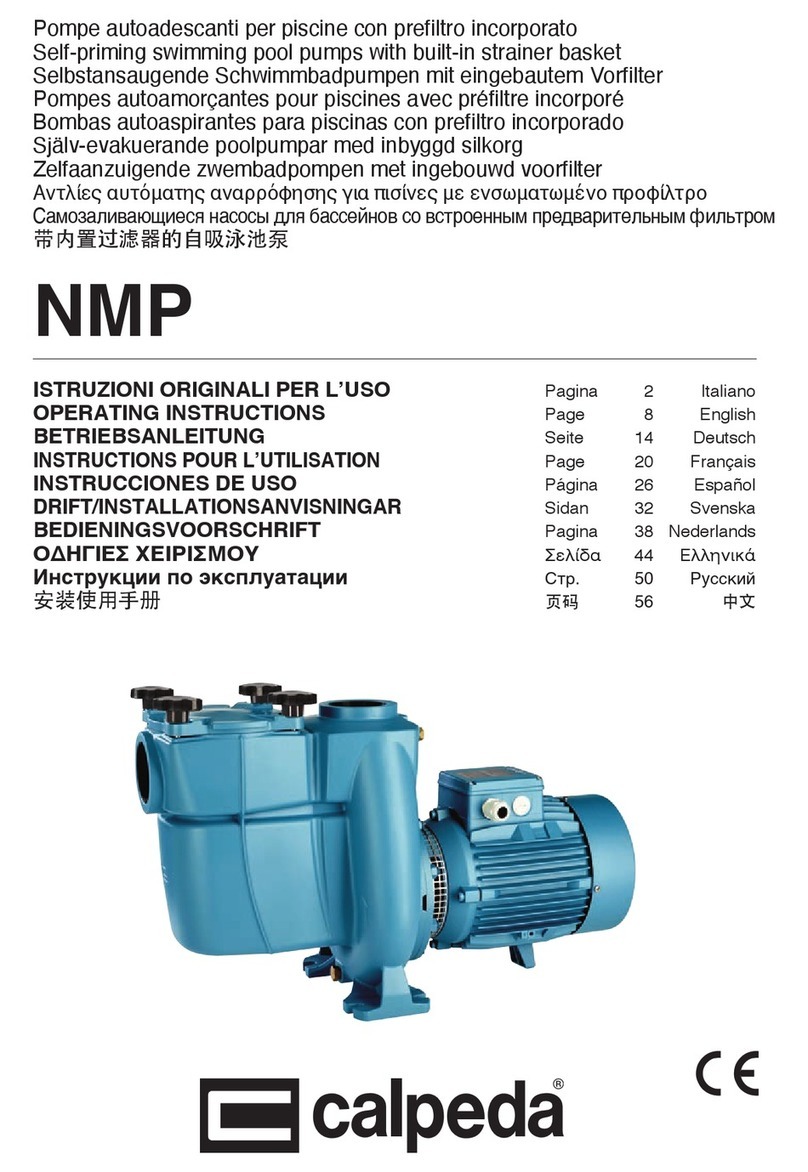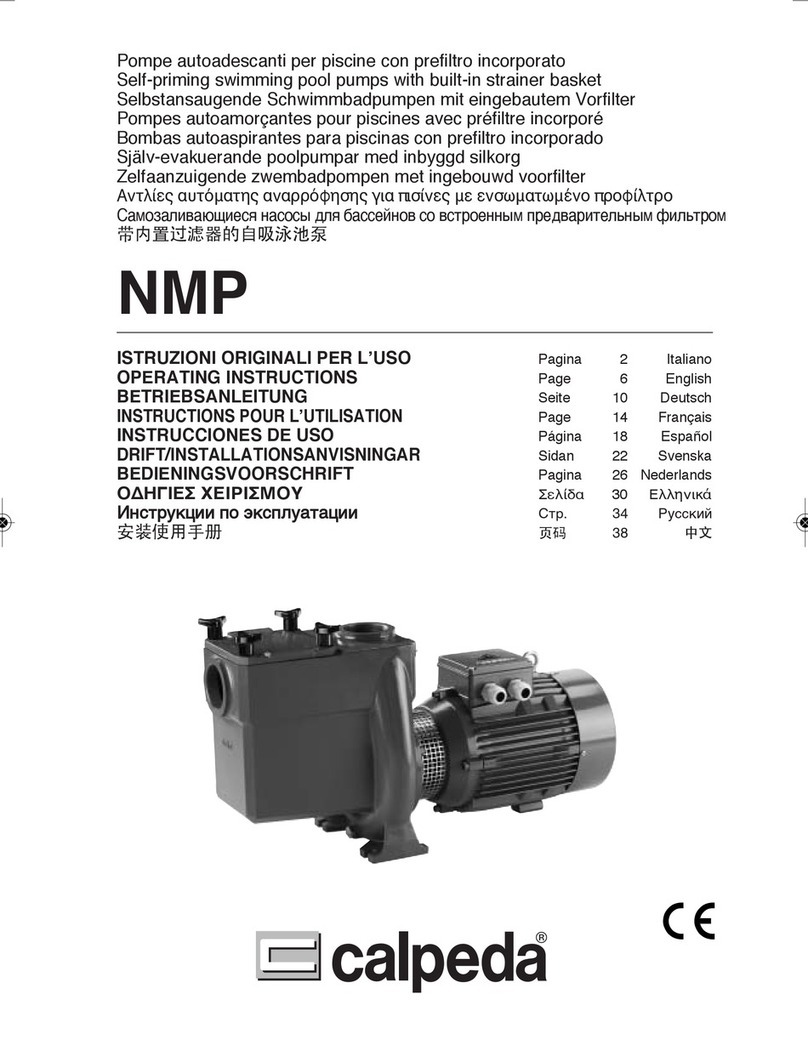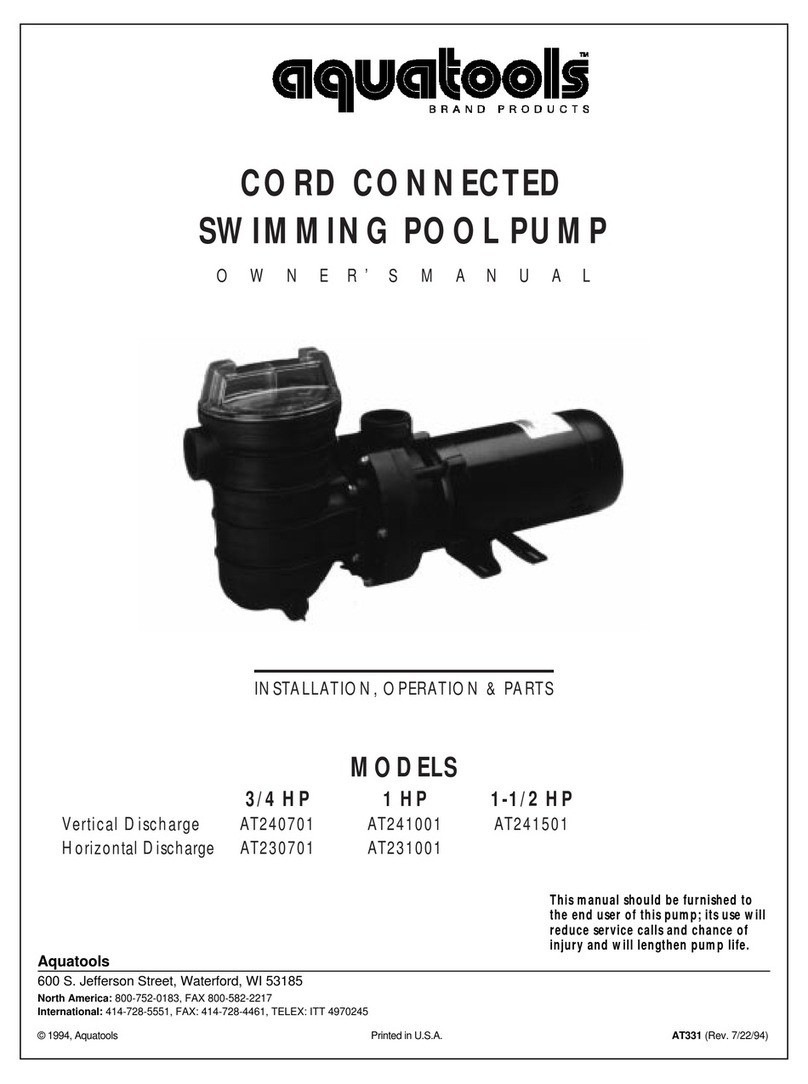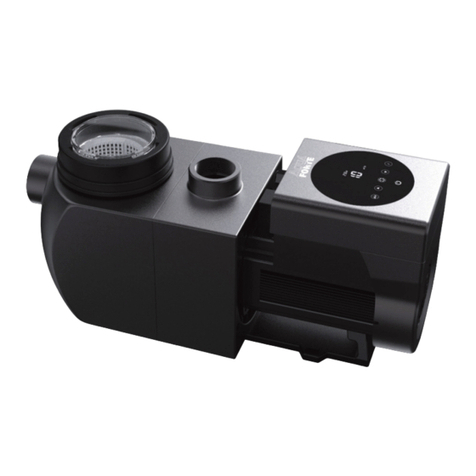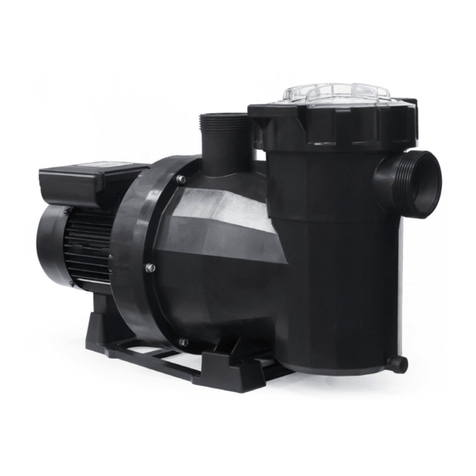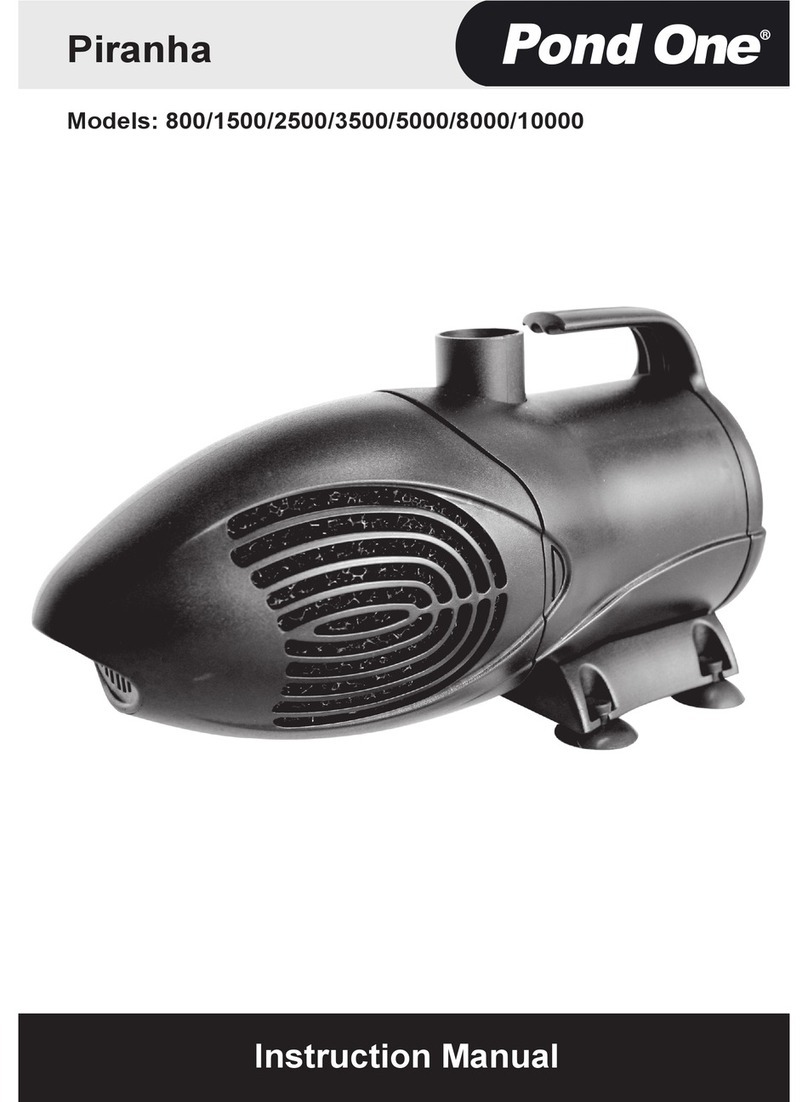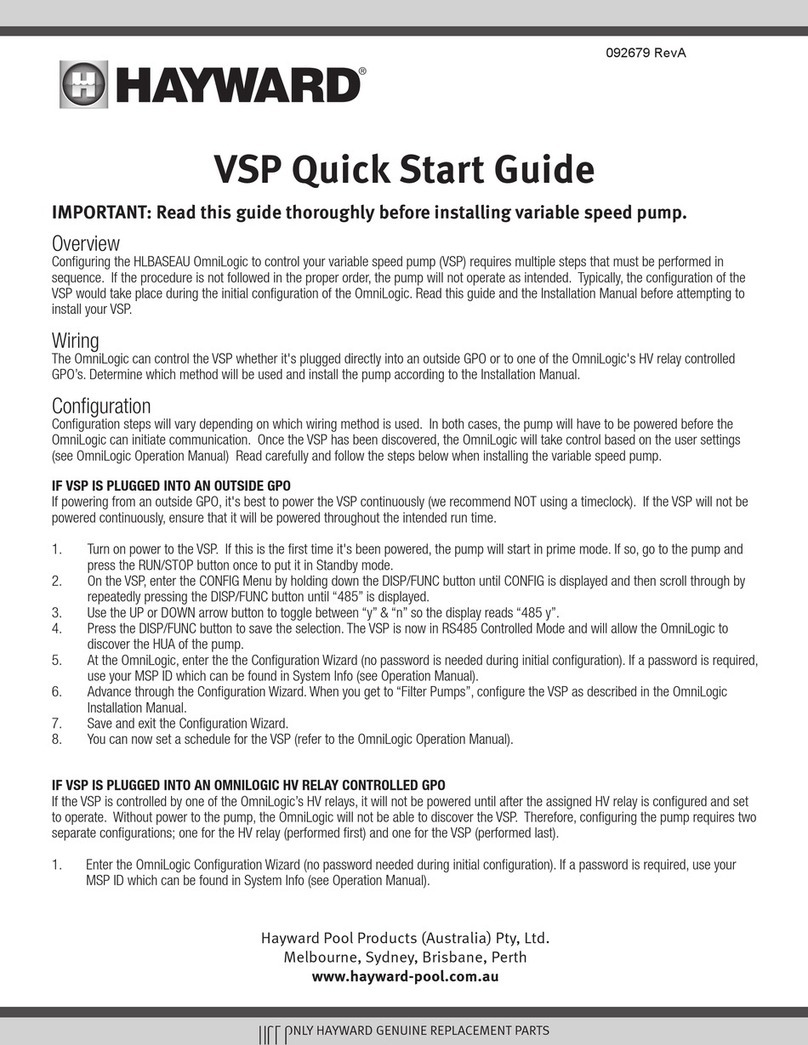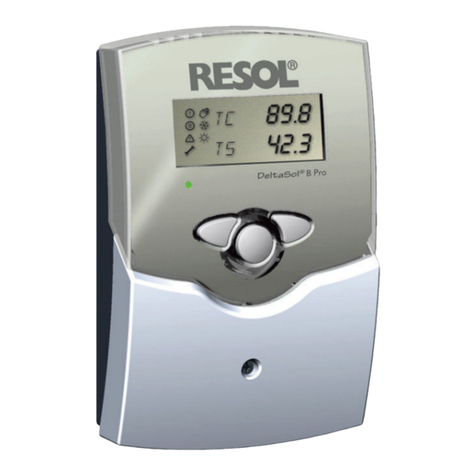
GB
MPC Rev17 - Operating Instructions Page 13 / 80
ATTENTION: ensure the inside of pipes are clean and
unobstructed before connection.
A concentrated sand content with particles larger
than the radial clearance between the impeller and
the stainless steel wear-ring (about 1 mm) can cause
early wear damage and a reduction of the pump
performance of about 10%.
For a hydrostatic pressure test of the piping with a
pressure higher than 2.5 bar isolate the pump from the
rest of the system (close inlet and outlet valves before
and after the pump).
6.4.2. Connecting the pipes
Use pipes or ttings in plastic material.
For connection to the threaded ports of the pump
casing use a plastic pipe thread sealant (for instance:
Loctite 5331).
Teon tape not recommended. Do not use hemp.
ATTENTION: avoid excessive tightening of pipes
or ttings in threaded ports.
Tighten the pipes or ttings only to the degree required
to ensure a tight seal.
Excessive torque may cause damage to the pump.
To join metal piping, rst connect a transition union
with a plastic tailpiece to the threaded port of the pump
casing. Coupling dissimilar materials may cause
corrosion and cracks due to non-uniform expansion
and contraction in thermal cycling applications.
Secure all pipes to supports and connect them so that
they do not transmit stress, strain or vibration to the
pump. The pump must not be subject to the weight or
thermal expansion of the piping.
Strain from the piping may damage or warp the
pump casing and cause leakage.
6.4.3. Suction pipe
The suction pipe must be perfectly airtight.
With a pump located below water level (inow under
positive suction head) (section 13., g. 7), install inlet
and outlet valves to isolate the pump.
With a pump located permanently above the water
level (suction lift operation), with various suction pipes
(for skimmers, main drain, tting for vacuum cleaner),
connect all the pipes with their own gate valve to a
manifold. As far as possible, locate the pipes and
the manifold below water level with the pump being
reached by a single vertical pipe (see section 14.,
gure 8b and section 7.2.3.).
With a pump located permanently above the water
level of a swimming pool, avoid suction lifts higher
than 3 m with respect to the main drain. With a suction
lift above 1,5 m t a check valve (accessible) in the
suction line from the main drain.
In operating with exible hoses, use a reinforced spiral
suction hose in order to avoid hose narrowing due to
suction vacuum.
6.4.4. Delivery pipe
Fit a gate valve in the delivery pipe to adjust delivery
and head.
Install a pressure gauge.
6.5. Electrical connection
OFF
Electrical connection must be carried out only
by a qualied electrician in accordance with
local regulations.
Follow all safety standards.
The unit must be properly earthed (grounded).
Connect the earthing (grounding) conductor to the
terminal with the marking.
Compare the frequency and mains voltage with
the
name-plate data and connect the supply conductors
to the terminals in accordance with the appropriate
diagram inside the terminal box cover.
ATTENTION: never allow washers or other
metal parts to fall into the internal cable
opening between the terminal box and
stator. If this occurs, dismantle the motor to
recover the object which has fallen inside.
If the terminal box is provided with an inlet gland, use
a exible power supply cord of the H07 RN-Ftype with
section of cable not less than (par. 16 TAB 1).
If the terminal box is provided with an inlet bushing,
connect the power supply cord through a conduit.
For use in swimming pools, garden ponds and similar
places, a residual current device with IΔN not
exceeding 30 mA must be installed in the supply circuit.
Install a device for disconnection from the mains
(switch) with a contact separation of at least 3 mm in
all poles.
With a three-phase motor install an overload protection
device appropriate for the rated current of the pump.
Single-phase MPCM, are supplied with a capacitor
connected to the terminals and (for 220-240 V - 50 Hz)
with an incorporated thermal protector.
In Austria pumps to be used in swimming pools and
garden ponds should be equipped with a xed con-
nection line according to ÖVE B/ EN 60555 Part 1 to
3; power supply should be via a ÖVEtested isolating
transformer whereby the secondary nominal voltage
should not exceed 230V.
ATTENTION: When the pump is fed by a
frequency converter, the minimum frequency
should not fall below 25Hz and in any case the
total head of the pump should never be lower
than 3 m.
7. STARTUP AND OPERATION
7.1. Preliminary checks before start-up of the
pump
Do not start-up the device in case of damaged parts.
7.2. First starting
OFF
7.2.1. Checking the direction of rotation
ATTENTION: when the pump is started for the rst
time, with three-phase motors check the direction
of rotation.
With the three-phase models MPC 51, 61, 71, check
the direction of rotation before lling the pump (see
also section 8.4.).
MPC Rev17.indd 13 29/08/17 11:59
